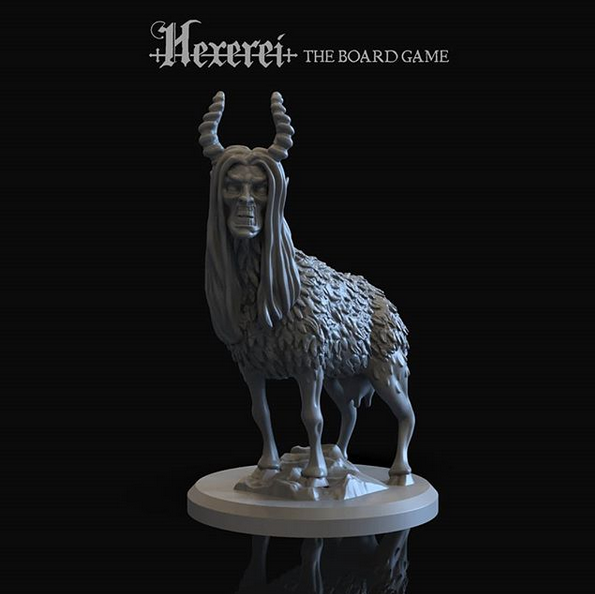The Judas Goat
Don't stare in its eyes.
General Information
The Judas Goat is a Coven Model, belonging to the Abomination type. Abominations are never Summoned, they just come when the time is right. That means: when a Region is completely Defiled by plague! The Judas Goat is a manifestation of pestilence, and a shepherd of the bloated dead. He leads shambling cadavers and delirious, feverish mortals in a danse macabre, following the Hunters like a very tangible nightmare. It is said that the dead make no sound, and in the darkest of nights an unfortunate soul might find himself surrounded by the plagued crowd. The sneering visage of the Judas Goat will be the last thing seen before being rent apart-- bodies flinging themselves against the desperate blows of the Witch Hunter. Besides being "free" of any summoning cost, the Judas Goat is quite strong in a fight, and can be gladly sacrificed for the sake of some damage, especially if the Coven is ready to rain Plague Tokens somewhere else: like the Fanatics, the Judas Goat will waltz back on the board each time there is a new Corrupted Region.The Legend
Such a horror shouldn't really be spoken about. Grim indeed would be the countenance of a grandmother cautioning an unruly child with this tale about the danger of keeping hatred cooped up, free to fester in silence... The Judas Goat is not a folk tale born and begotten in the 17th century, but we felt it fit the bill perfectly. A sort of plague-spirit, this imaginary Judas Goat is an emanation of mortality itself and leads infected people from village to village gathering a shambling army, spreading disease. Real Judas Goats were much more tangible, and quite prosaic: they were trained animals employed by a herder to lead cattle to the slaughter. The name, of course, is inspired by Judas Iscariot, the eponimous "betrayer" of the New Testament.Portrait

by Igor Krstic
Gifts
The Devil's boon manifests according to the nature of each minion.Abomination
This Model cannot be Summoned, but if it is not already in play, it will appear on the board when a Region is Defiled. Groovy! Free plague-ridden shambling dead!Lord of the Plague
Each turn the Judas Goat gets new members for its flock, to use as corpse-meat shields.Tactics
A Coven Model is always frightening and useful in a fight.Diseased Flock
Encounters previously pooled over the Judas Goat sheet can be Removed to save this Abomination from an extremely timely demise.Critical Hit
It's very bad to be hit with a Critical by the Judas Goat. It counts as +2 Mortality on the following roll.Remove these ads. Join the Worldbuilders Guild










Comments